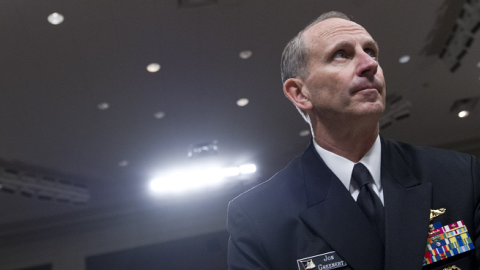The Navy is bureaucratically trying to kill a carrier it believes it can no longer afford. It is proposing long term lay-up of eleven cruisers as a fall-back force structure preservation measure. It is truncating its small surface combatant program (under pressure) in search of additional lethality and survivabilty, injecting unwelcome churn into a program that has finally begun to hit reasonable unit production costs, while likely creating a hole in its shipbuilding plan. It is reducing its buy of fifth generation fighters. It is closing down the production line of one of is most successful weapons--the Tomahawk Land Attack Missile--without an identified replacement and several years until that replacement is in production. It is struggling to afford two attack submarines a year even as its highest priority acquisition program--the follow-on ballistic missile submarine--looms on the horizon with its cost likely to consume nearly half the shipbuilding budget for ten years. And its shipbuilding plan--the one now aiming at 308 ships--is underfunded to the tune of nearly $4B a year when compared to historical levels of spending, realistically pointing toward a fleet at least 20% smaller than is planned.
Simultaneously, the importance of a powerful, globally employed Navy to our security and prosperity rises. China continues to play the part of the rising power whose respect for the current global order and what it takes to maintain it is questionable. Russia has decided to use its military and economic power to re-assert itself as a brooding Eurasian power. North Africa and the Mediterranean rim are increasingly unstable, Turkey is having a hard time figuring out what kind of nation it wants to be, and Israel remains in the crosshairs of nations and movements who want it gone.
All of which it occurs to me, argues for a greater emphasis on American Seapower, for the kinds of capabilities ONLY a force that is persistent, powerful, and self-sustaining can provide. A force that brings with it both the helping hand for those facing disaster and the mailed fist of deterrent strength to remind those who would disturb regional security.
Which brings me to the CNO's speech yesterday at the Navy League's Sea Air Space Symposium. In it, he debuted what appears to be a new line of strategic communication for him, that of pursuing greater joint force interdependence. While I applaud the CNO's commitment to eliminate overspending and to investigate avenues of cooperation among the Services in research and development/science and technology, it baffles me that he would select the most prestigious forum for American Seapower to make a case that what we need now is MORE Jointness. I believe quite the opposite. What we need now is more Seapower, and more reliance on it. For most of the joint era, land power has been the supported force, with Seapower and air power in support. Jointness--the kind which the Chairman of the Joint Chiefs advocates and to which the CNO refers--meant everyone being jointly in support of land operations, which is one of the reasons the Army was the Service that supported Goldwater Nichols most strongly. Hewing to this line in a maritime era will dramatically mis-allocate scarce resources and leave the United States less capable of responding to growing threats.
More jointness will not arrest a Navy in decline; more Navy will. And no one is in a better position to advocate for that than the CNO.



















